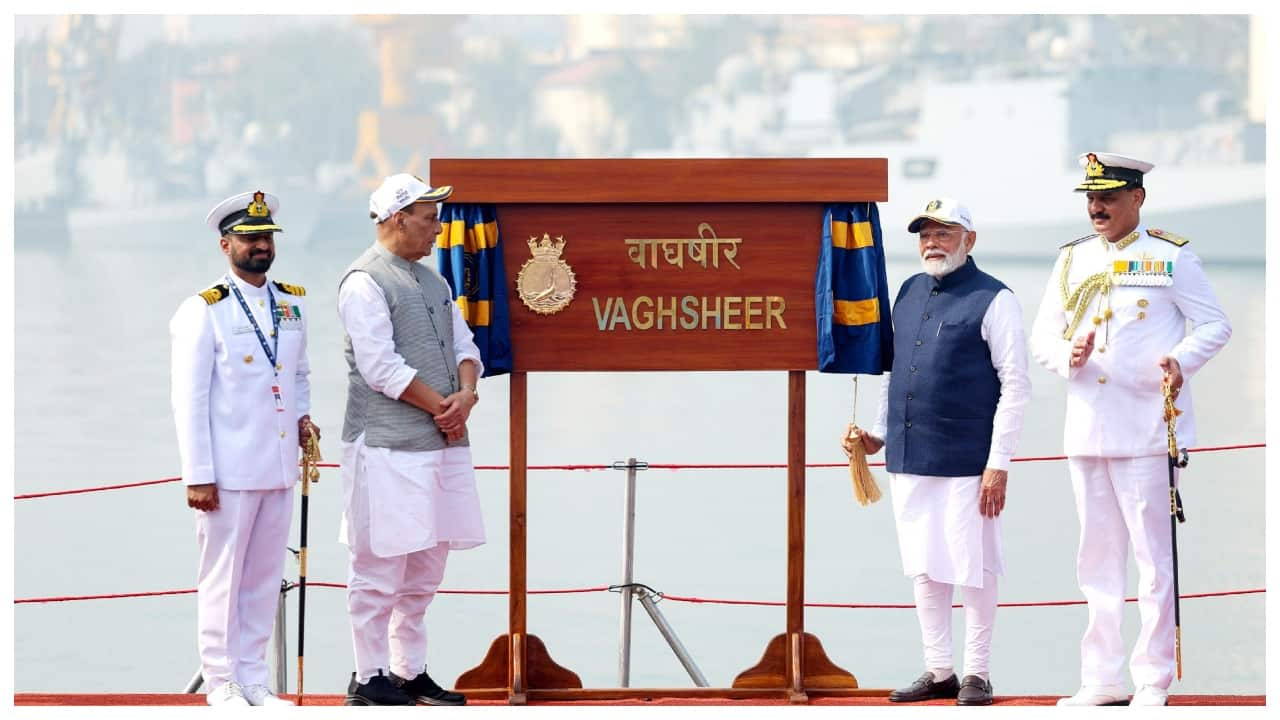 |
|
The Indian Navy recently expanded its fleet with the addition of three significant warships: INS Nilgiri, INS Surat, and INS Vaghsheer. These vessels represent a considerable boost to India's maritime capabilities and signify the nation's commitment to strengthening its self-reliant defense sector. The commissioning ceremony, attended by Prime Minister Narendra Modi, highlighted the strategic importance of these additions. The names themselves, however, also tell a story, revealing the thoughtful process behind designating monikers to these powerful naval assets. INS Nilgiri, a stealth frigate, takes its name from the majestic Nilgiri Hills in the Western Ghats, a symbol of India's natural beauty and strength. INS Surat, a stealth destroyer, is named after the vibrant city of Surat in Gujarat, a historical center of trade and commerce, reflecting the ship's role in safeguarding India's maritime trade routes. Finally, INS Vaghsheer, a submarine, is aptly named after the sand fish, a formidable predator of the Indian Ocean, reflecting the submarine's stealth and offensive capabilities.
The naming of Indian Navy ships is a carefully considered process, overseen by the Internal Nomenclature Committee (INC) at the Ministry of Defence. This committee comprises experts from various fields, including naval history, archaeology, and the Ministry's historical section. The committee's recommendations are then submitted for the approval of the Navy Chief and ultimately, the President of India. This multi-layered approval process underscores the significance attached to the names of these vessels, which not only represent the ships themselves but also evoke a sense of national pride and history. The naming conventions themselves are steeped in tradition, reflecting the type of vessel and its intended role. For example, cruisers and destroyers are typically named after state capitals, major cities, or prominent historical figures. Frigates often bear names of weapons, rivers, or mountain ranges, while corvettes may receive names associated with certain qualities or personal arms. Submarines, reflecting their underwater nature, are commonly named after predatory fish or concepts related to the sea.
The meticulous process ensures that each name holds a specific significance. No two naval or merchant ships can share the same name, guaranteeing uniqueness and a clear identification system. The selection of names, therefore, goes beyond mere labeling; it serves to honour India's history, geography, and cultural heritage while showcasing the capabilities and purpose of each naval vessel. The commissioning of INS Nilgiri, INS Surat, and INS Vaghsheer not only strengthens India's naval power but also reaffirms the nation's commitment to developing and maintaining a sophisticated and modern defense force. The strategic importance of this development extends beyond purely military considerations; it reflects India's growing role on the global stage and its unwavering dedication to securing its maritime interests. This move reinforces the nation's ability to protect its coastline, safeguard its trade routes, and project power in the Indian Ocean region and beyond. The choice of names, reflective of India's rich heritage, further enhances the symbolic significance of these new naval additions, underscoring the strong connection between the nation's history and its future security aspirations.
The Project 17A frigate, INS Nilgiri, exemplifies the cutting-edge technology and indigenous design capabilities of India's warship design bureau. Its advanced features, including enhanced survivability, seakeeping, and stealth capabilities, showcase a significant advancement compared to its predecessors. Similarly, INS Surat, the final vessel in the Project 15B stealth destroyer class, demonstrates further evolution of India's destroyer capabilities. Built upon the design of the Kolkata-class destroyers, INS Surat incorporates advanced features that enhance its role in strengthening India's surface fleet. Finally, INS Vaghsheer, the sixth and final Scorpene-class submarine under Project 75, exemplifies India's growing submarine prowess. Its capabilities in anti-surface warfare, anti-submarine warfare, and intelligence gathering, coupled with its modular design that allows for future upgrades, solidifies its importance in maintaining India's maritime security. The successful completion of these projects further underscores India's progress in developing its indigenous defense capabilities, reducing its reliance on foreign sources and strengthening its national security posture. The investment in these projects represents a considerable commitment to ensuring India's continued naval dominance in the Indian Ocean and beyond, guaranteeing its ability to respond effectively to evolving security challenges.
Source: Vaghsheer, Nilgiri, Surat: How do Indian Navy ships get their name?
